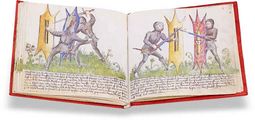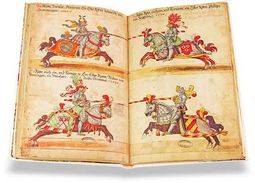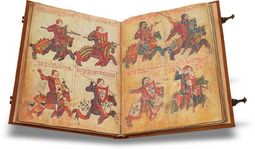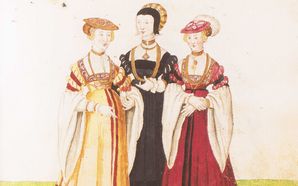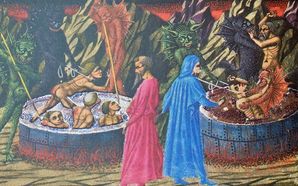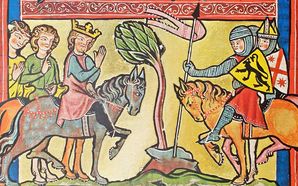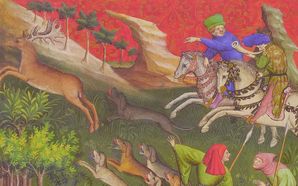Knights and Fencing
The knight is one of the most important and iconic figures of the Middle Ages, one which embodies many of the ideals and contradictions of the period. In addition to being some of the most common patrons of medieval manuscripts, it is no wonder that they appear as figures in most illuminated manuscripts.
Biblical warriors were typically presented in the arms and armor of the period in which the artists lived. Certain manuscripts were dedicated specifically to the knight's way of life with some chronicling tournaments and the history of military orders while others served as practical manuals detailing swordplay and various other combat techniques.
Most of these manuscripts originate from the Late Middle Ages when the battlefield role of the knight was already diminished but was still important socially and politically, leading to an idealized concept of chivalry. Nonetheless, these works serve as some of the most valuable sources not only on medieval warfare but life in the Middle Ages because they are also filled with depictions of daily life.
Demonstration of a Sample Page
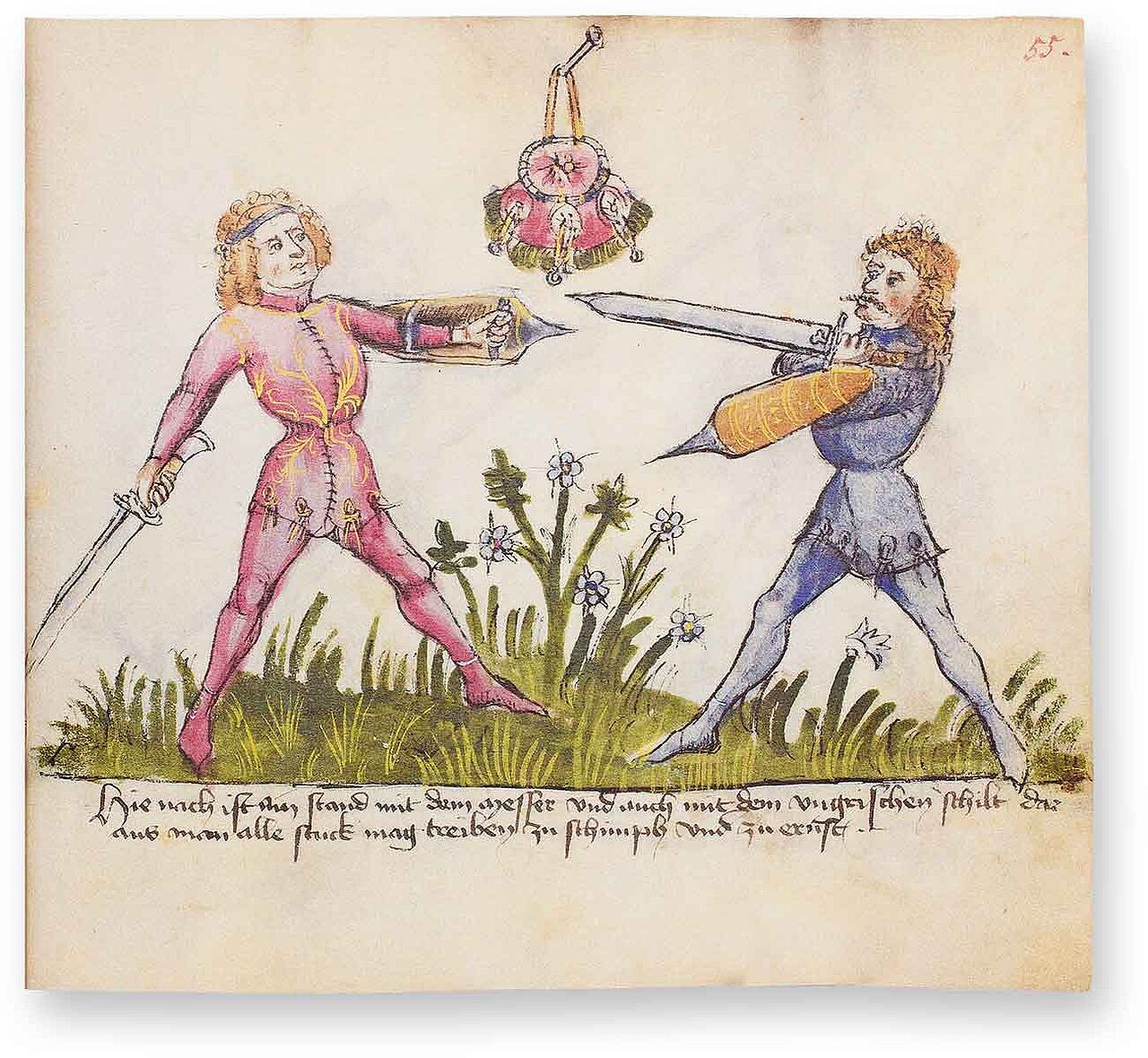
Gladiatoria
Fighting with Messer and Hungarian Shield
Stylishly attired in contemporary fashion, two fencers face off armed with the Messer, a single-bladed knife up to 1.5 meters long with a simple cross-guard popular between the 14th and 16th centuries, especially among Landsknecht mercenaries. The small shield they are using is referred to as a “Hungarian shield”, a style popular in late-medieval Germany, and has a pointed end for offensive use.
The caption below the image reads: “This is a stance with the Messer and also with the Hungarian shield from which all devices can derive in play and in earnest.” The devices the author refers to are the various fencing maneuvers for striking or parrying. Both men stand on their toes and have wide stances with their weight evenly balanced.

